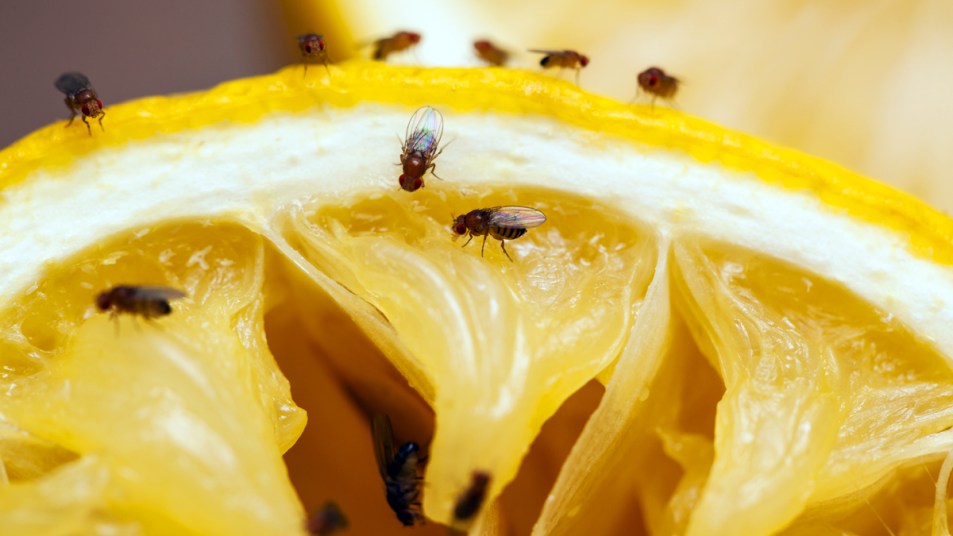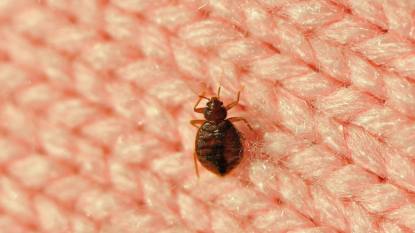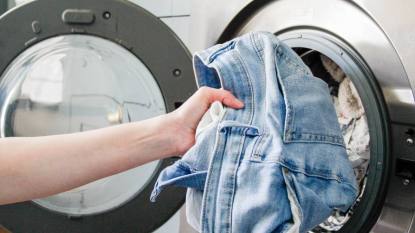How to Get Rid of Fruit Flies and Make Sure They Stay Away For Good

We love countless things about summer, but fruit flies definitely don’t make the list. Anyone who’s attempted to swat at these pests knows how frustrating it can feel to realize the sneaky bugs have managed to escape our clutches yet again. Thankfully, figuring out how to get rid of fruit flies once and for all is totally easy.
You don’t need to rely on any harsh chemicals or call in pros to kick fruit flies to the curb. Take a look to learn a few simple tricks to send them packing — and keep them from ever coming back.
What causes fruit flies in the house?
Entomology experts from the University of Kentucky College of Agriculture, Food, and Environment explain theses pests can make their way into your home through open doors and windows, but the real trouble starts when they lay eggs. The university claims, “Given the opportunity, they will lay about 500 eggs.” Yikes, that’s a lot of annoying baby bugs potentially buzzing around your home.
Although you might find fruit flies in your home all year round, they are especially common during the late summer and early fall. As their name suggests, these flies are attracted to ripe fruit left out in the open (which we tend to have more of in the warmer months). They’ll also gravitate toward veggies, plus garbage disposals, empty bottles and cans, trash bins, and cleaning rags. They’re just looking for anything with a moist film of fermenting organic material to feast on and breed around.
How do I know if I have fruit flies or gnats?
Many people use “fruit flies” and “gnats” interchangeably, but there are some subtle differences between these tiny bugs. First, fruit flies will have a light orangey red color to them and beady red eyes. Gnats are usually all black and have a more slender build with clear or gray wings.
If you notice small pests flying around your plants, those are probably fungus gnats rather than fruit flies. Luckily, we also happen to have easy tips for getting rid of gnats on your house plants! But if you spy a swarm hanging around your ripe fruit, veggies, garbage disposal, recycling and trash bins, and other similar areas, you’ve probably got fruit flies.
How do you get rid of fruit flies once and for all?
Experts from the University of Kentucky emphasize the importance of making sure you’re nixing anything that might attract the flies in the first place.
Eating fruit and veggies that have been sitting out in the open as soon as they’re ripe is a major key. Stashing them away in the fridge can help, too. Rinsing out items before putting them in your recycling bins (like sugary sodas and canned food remnants) and using a tight lid over your trash are also good to keep in mind. Of course, cleaning up any spills or food messes as quickly as possible will keep flies from honing in on those as well. Keep an eye out for sneaky areas you might not catch while doing your regular cleaning routine, like under the fridge and other appliances.
But if you always keep your home spic and span and still find yourself battling the bugs, we have some easy tips you can try.
How to Get Rid of Fruit Flies with Vinegar
Using vinegar is arguably the most popular method for getting rid of fruit flies — because it works! Most techniques involve pouring a little white or apple cider vinegar into a glass, using a piece of paper to create a cone shape, then placing that on top like a funnel (just be sure the bottom doesn’t dip into the vinegar). Some people prefer to cover the glass with plastic cling wrap and poke a few holes into it. Either way, the paper or plastic acts as a barrier which allows the fruit flies to enter the vinegar pool, but also make it difficult for them to find their way back out again.
To make this even more effective, you can add a few drops of dish soap to the vinegar. The soap will break the surface tension on the liquid, making it more likely that the flies will fully submerge and drown in the vinegar rather than just get a little wet and go back about their merry way.
Take a look at the video below to see how well it works:
How to Get Rid of Fruit Flies without Vinegar
If you don’t have any vinegar on hand (or maybe you just really hate the smell of it), there are other options. For example, you ca follow the exact same trap technique outlined above with a cup and paper or cling wrap, but use scraps of fruit or veggies to lure the bugs instead. A single slice of banana or even the peel you’d usually toss out will get the job done. The fruit flies will be tempted by the sweet treat and find it hard to make their way out again. This method might not kill them, but it should tucker them out long enough for you to dispose of them.
Chowhound also recommends tying a mixture of yeast, sugar, and water to attract flies to the bottom of a glass. Once it’s all blended together, you can also add a few drops of dish soap to break that surface tension and get them to really sink.
Hydrogen peroxide can also kill fruit flies, eggs, and larvae to be sure to ward off future generations of annoying pests hanging around your home. According to Arceneaux Pest Management Service, it’s especially effective for cleaning out any drains or garbage disposals where they might be hiding out. Pour enough down the drain until you see it start to bubble and foam. You can also make a spray with one part hydrogen peroxide and three parts water to spritz around your plants to get rid of fruit flies and gnats lingering around them.
Hopefully all of this advice will add up to all of us enjoying summer (and the rest of the year) without any fruit flies buzzing around! And if you’re looking for ways to get rid of other pests, check out our list of plants that ward off mosquitos and other tips for naturally getting rid of bugs around your yard and home.













